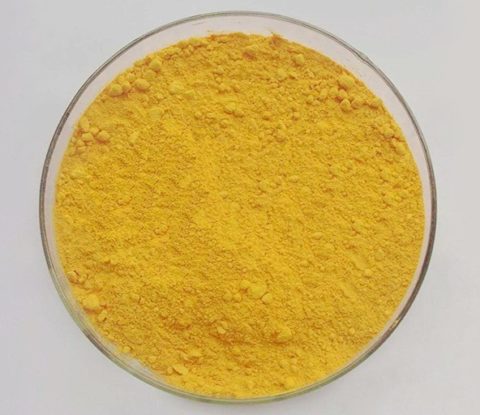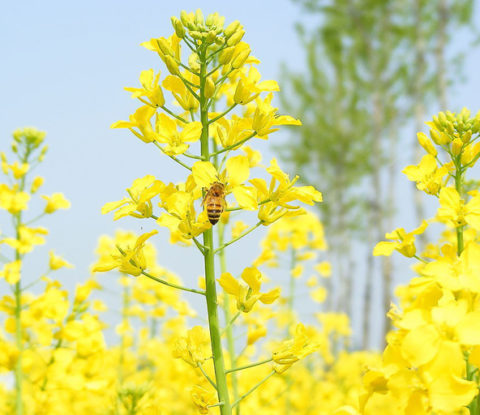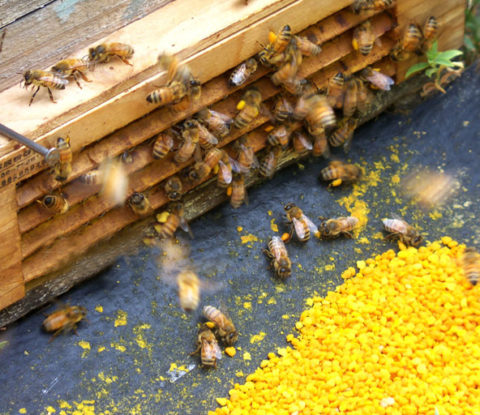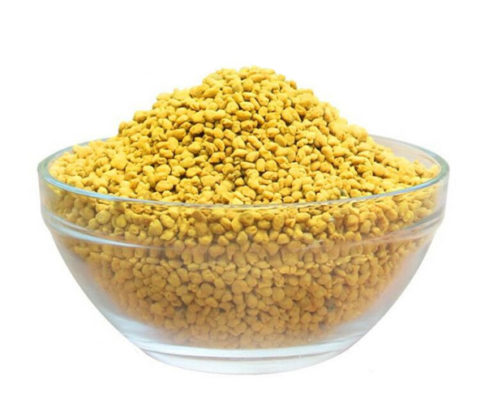
Brassica Bee Pollen Powder
【Botanical Source】: Brassica campestris L.
【Particle Size】: 200 mesh
【Appearance】: Light yellow fine powder
【Specification】: Cell-broken ratio>98%; Protein>18%
【Main function】: Treatment of prostatitis
Brief Introduction
As plants flower, pollen is transferred from the anther of a stamen to the top of a pistil (stigma); on reaching the ovary it brings about fertilization of seeds. Entomophilous pollen refers to pollen that is spread by insects such as bees; anemophilous pollen refers to pollen spread by wind. In contrast to bee pollen, which is collected from bees, flower pollen is harvested directly from plants. The major flower pollen supplement in the marketplace is harvested from a number of organically grown, specially selected flowers such as pine pollen powder.
Brassica(Rape) Flowers Bee Pollen is successfully being used to treat prostatitis and prostate enlargement. This herb, also called Canola, contains vital nutrients proven by the Chinese to have powerful anti-inflammatory effects on the prostate with no adverse side effects. Flower Pollen Powder is aimed for treatment of prostate and urinary function of men. It also cleans the urinary tract of women. The supplement Flower Pollen is an extract of pollen, -a substance which consists of the male germ seeds of plants, flowers and tree blossoms. And below tables lists thenutrition facts of Brassica(Rape) Flowers Bee Pollen as a reference:
Brassica(Rape) Flowers Bee Pollen and Benign prostatic hyperplasia (BPH)
Benign prostatic hyperplasia (BPH), a condition characterized by excessive and uncontrolled growth of the prostate gland, affects ~85% of males over 50 years of age. Considering the high incidence of BPH and the effect this condition has on the quality of life, treatment of this disease is a priority for public health. The aetiology of BPH is complicated and remains unclear; however, recent novel observations highlight the key role of aging, hormonal alterations, metabolic syndrome and inflammation.
At present, pharmacotherapy remains the modality of choice for BPH treatment and may be roughly divided into three groups: α-blockers, 5α-reductase inhibitors and alternative therapies (Sutcliffe S, Grubb RL, III, Platz EA, et al. Urologic Diseases in America Project. Non-steroidal anti-inflammatory drug use and the risk of benign prostatic hyperplasia-related outcomes and nocturia in the Prostate, Lung, Colorectal, and Ovarian Cancer Screening Trial. BJU Int. 2012;110:1050–1059.). However, these prescription medications may have adverse side-effects, including orthostatic hypotension, decreased libido and ejaculatory or erectile dysfunction. Due to these risks, natural products that appear to have limited adverse events are becoming increasingly important in the treatment of BPH. Previous studies have shown that a number of natural products, including saw palmetto, Sphaeranthus indicus, Pygeum africanum and Hypoxis rooperi, possess anti-BPH potential (Wilt TJ, Ishani A, Rutks I, MacDonald R. Phytotherapy for benign prostatic hyperplasia. Public Health Nutr. 2000;3:459–472.).
Bee-collected pollen is an apicultural product that is composed of nutritionally valuable substances and considerable amounts of biologically active substances. Rape (Brassica campestris L. var. oleifera DC.) is planted in the majority of regions worldwide. In China, the bee pollen of this plant is widely used as a natural supplement to everyday meals and as an herbal medicine to strengthen the resistance of the body to diseases. This is due to the abundant nutrient properties, including sugars, proteins, lipids, vitamins, carbohydrates and phenolic compounds (Grove MD, Spencer GF, Rohwedder WK, et al. Brassinolide, a plant growth-promoting steroid isolated from Brassica napus pollen. Nature.).
Researches on Effect of Brassica(Rape) Flowers Bee Pollen on Benign prostatic hyperplasia (BPH)(BI-CHENG YANG, Published online 2014 Apr 14. doi: 10.3892/etm.2014.1680; Inhibitory effect of rape pollen supercritical CO2 fluid extract against testosterone-induced benign prostatic hyperplasia in rats)
Materials and methods
SFE-CO2 extraction
Pollen from Brassica campestris L. var. oleifera DC. was collected from Inner Mongolia (China) in July 2008 and was identified by Professor Xu Feng (Jiangsu Institute of Botany, Nanjing, China). A voucher specimen (PN-2008-01) was deposited in the Herbarium of Shanghai Institute of Pharmaceutical Industry (Shanghai, China). Two 1,000-g samples of dried pollen, of which the cell walls were lysed by zymolysis, were extracted by SFE-CO2 at 40 MPa and 50°C. The combined extract was evaporated under a reduced pressure to produce a yellow gum (yield, 83 g).
Animals
Specific pathogen-free male Sprague-Dawley rats with an initial body weight of 230–250 g were purchased from Shanghai Xipuer – Bi Kai Experimental Animals Ltd. (Shanghai, China). The rats were housed in clean pathogen-free rooms in an environment with controlled temperature (22°C), humidity and a 12 h light/dark cycle. Rats had free access to water and a standard laboratory diet. All animal procedures were conducted strictly in accordance with the International Ethical Guidelines and the guide for the Care and Use of Laboratory Animals. Experiments were approved by the Institutional Animal Care and Use Committee of Shanghai Institute of Pharmaceutical Industry.
Construction of the rat BPH model and drug administration
A rat model of BPH was induced by subcutaneous (sc) injections of testosterone propionate following castration. One week following surgery, the rats were randomly divided into five groups (n=7): Castration (saline 10 ml/kg), model (saline 10 ml/kg), finasteride (5 mg/kg) and two rape pollen SFE-CO2 extract groups (21.3 or 88.7 mg/kg). Rats in the model and treatment groups received saline or drug via gastrogavage, in combination with sc injection of 5 mg/kg testosterone propionate daily for 30 days, while those in the castration group received saline by gastrogavage and 1 ml corn oil by sc injection. The body weight of each rat was measured once a week.
Animals were anesthetized with pentobarbital (100 mg/kg body weight; i.p.) following final treatment and overnight fasting. Blood samples were collected from the caudal vena cava. Serum was separated by centrifugation and stored at −80°C. Whole prostates were immediately removed and weighed and relative organ weights were calculated as the ratio of organ weight to body weight. Sections of the ventral prostate lobe were fixed with 10% neutral buffered formalin and embedded in paraffin for histological analysis. The remaining prostate samples were stored at −80°C.
Conclusion
The present study found that COX-2 levels in the pollen-treated group significantly decreased compared with those in the testosterone-induced BPH group. These observations indicate that rape pollen SFE-CO2 inhibits the development of BPH in rats and these effects were closely associated with a reduction in COX-2 expression. In conclusion, oral administration of rape pollen SFE-CO2 in a BPH rat model significantly decreased the prostatic index, as well as the DHT, 5α-reductase and COX-2 expression levels. These observations indicate that rape pollen SFE-CO2 inhibits the development of BPH in rats and these effects were closely associated with a reduction in the levels of DHT, 5α-reductase and COX-2. The results of the present study clearly indicate that rape pollen SFE-CO2 may be useful in BPH treatment.








